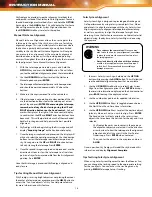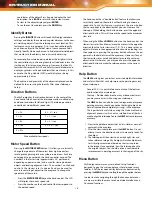
P
Parallax
Parfocal
Parsec
Point Source
R
Reflector
Resolution
Right Ascension (RA)
S
Sidereal Rate
T
Terminator
U
Universe
V
Variable Star
W
Waning Moon
Waxing Moon
Z
Zenith
Zodiac
Parallax is the difference in the apparent position of an object against a background when viewed by an
observer from two different locations. These positions and the actual position of the object form a triangle
from which the apex angle (the parallax), and the distance of the object can be determined if the length of
the baseline between the observing positions is known, and the angular direction of the object from each
position at the ends of the baseline has been measured. The traditional method in astronomy of determining
the distance to a celestial object is to measure its parallax.
Refers to a group of eyepieces that all require the same distance from the focal plane of the telescope to be
in focus. This means when you focus one parfocal eyepiece all the other parfocal eyepieces, in a particular
line of eyepieces, will be in focus.
The distance at which a star would show parallax of one second of arc. It is equal to 3.26 light-years,
206,265 astronomical units, or 30,800,000,000,000 km. (Apart from the Sun, no star lies within one parsec of
us).
An object which cannot be resolved into an image because it to too far away or too small is considered a
point source. A planet is far away, but it can be resolved as a disk. Most stars cannot be resolved as disks,
they are too far away.
A telescope in which the light is collected by means of a mirror.
The minimum detectable angle an optical system can detect. Because of diffraction, there is a limit to the
minimum angle resolution. The larger the aperture, the better the resolution.
The angular distance of a celestial object measured in hours, minutes and seconds along the Celestial
Equator eastward from the Vernal Equinox.
This is the angular speed at which the Earth is rotating. Telescope tracking motors drive the telescope at
this rate. The rate is 15 arc seconds per second or 15 degrees per hour.
The boundary line between the light and dark portion of the Moon or a planet.
The totality of astronomical things, events, relations and energies capable of being described objectively.
A star whose brightness varies over time due to either inherent properties of the star or something eclipsing
or obscuring the brightness of the star.
The period of the Moon’s cycle between full and new, when its illuminated portion is decreasing.
The period of the Moon’s cycle between new and full, when its illuminated portion is increasing.
The point on the Celestial Sphere directly above the observer.
The zodiac is the portion of the Celestial Sphere that lies within 8 degrees on either side of the Ecliptic. The
apparent paths of the Sun, Moon and the planets with the exception of some portions of the path of Pluto,
lie within this band. Twelve divisions, or signs, each 30 degrees in width, comprise the zodiac. These signs
coincided with the zodiacal constellations about 2,000 years ago. Because of the precession of the Earth’s
axis, the Vernal Equinox has moved westward by about 30 degrees since that time; the signs have moved
with it, and thus no longer coincide with the constellations.
28
INSTRUCTION MANUAL



















